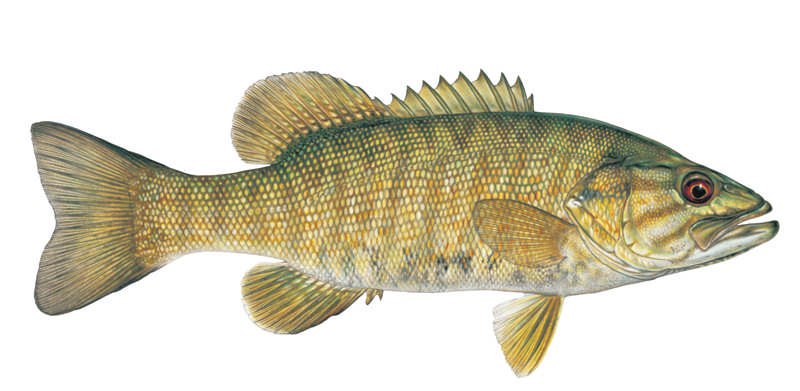
I love fall; after a long, hot summer, I am always ready for cooler temperatures and the beautiful autumn colors. But most of all, I am ready for the fabulous fall fishing! When fall arrives, most fishermen start winterizing their boat and putting away their fishing equipment. They are missing out on some of the best fishing of the year. Here are some tips that have brought me a lot of success during the fall for some of our most popular fish species.
Largemouth Bass
Lakes and reservoirs are always full of schooled-up bait fish in the fall, and you want to make finding them your number one priority. Why? Because where you find them, you will also find hungry largemouth. During fall, bait fish are usually found hundreds of yards away from structure and in open water. You can use your sonar to locate them or just look for bait fish skimming across the water being chased by hungry fish. Circling and diving birds are also an indication of bait fish locations. Most of my fall largemouth success has been fishing long extended points with crank baits in 5–8 feet of water. Even though you find bait fish, you never know when the largemouth may decide to start feeding. So you need to be on the water as much as possible. While you’re waiting, use reaction type baits to try to trigger the largemouths’ instincts to attack until they decide to go on a feeding binge.
Blue Gill
During the fall, bluegill go to shallow weeds and rocks and hang right on drop offs. Live bait is the best way to go. If it’s midday and bugs are hatching, using a sinking fly can also get a lot of strikes.
Pike
Come fall, lake water temperatures cool, and big pike are no longer controlled by the temperature, so they roam. They head into the shallows to hunt bait fish and those they like to feed on are pretty big by fall. Start off by casting big topwater baits in the shallows near a weedline or a sharp break off a point. If the pike are there, the bait will be engulfed, and the fight is on. On days when the fishing requires a little more effort, try floating/diving lures.
Perch
Those great-to-eat yellow perch move into shallow waters as the water temperatures drop in the fall and feed on schools of small bait fish. They are especially attracted to muddy areas. Try small minnow baits with a lot of action near structure. I like to use shiny, vibrating lures across structures and near drop-offs. Colors like chartreuse or bright red can be effective in clear or stained water, and flashing blades work well on sunny days.
Muskie
For big fall muskies, just like perch, follow the schools of baitfish. Cooler water means that they just won’t chase a fast moving lure, so go to large, slow moving baits. Prime places are clear weedless water where big muskie will be patrolling for bait fish like river-mouths, rocky points, narrows or in open water off big weed beds.
Crappie
The best tactic I have found for finding fall crappies is to go right back to the area where I caught them when the water temperature was the same in the spring. Use small tubes and grubs in the 2-inch range. Cast to structure and swim them back to the boat. Crappies often concentrate around standing timber, which allows them to move shallow or deep as water and weather conditions dictate. On cloudy or windy days when light doesn’t penetrate very far into the water, crappie may be within a few feet of the surface. Bright, sunny, post-frontal days may find them hugging the bottom. Adjust your tactics and catch limits of crappie.
Walleye
Walleyes move shallower as the surface temperature begins to cool in early fall. They also feed more during the day. Later in the fall when the water temperature begins dropping, they are usually found deeper. For most of the fall, I usually do best trolling crankbaits. You will have to experiment with your trolling presentation as it can vary from lake to lake and location to location. Trolling allows you to see where the walleye are moving. Most of the time, they can be found near areas with big structure. Big baits will usually be more effective because walleye are wanting to bulk up in the fall.
Smallmouth Bass
During fall, smallmouth bass are also looking for bait fish, but they will be deeper, so try long, slender, diving crank baits that dive from 12–30 feet. Tube baits are also good, but try to match them to the size and color of the bait fish they are feeding on. My favorite bait for smallmouths is a jigging spoon. I like to use a variety of colors and jigging actions because every day is different. Just let the fish tell you what they want. In most cases, hits will come after you let the spoon hit bottom, lift it a few feet and then let it flutter back down.
About the Art The fish illustrations are by Joseph R. Tomelleri. To view more of Joe’s work or to order fine art prints, visit americanfishes.com.


















